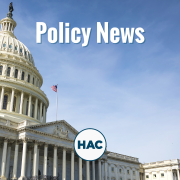Congressional Hearing Addresses Refinancing for Rural Homeowners
On May 6, 2021 the House Appropriations Subcommittee on Agriculture held a virtual hearing on the Biden administration’s plans for the U.S. Department of Agriculture’s Rural Development mission area, which covers housing, community facilities, utilities and business. Broadband internet connection was the subject raised most often by members of the subcommittee.
Justin Maxson, the Deputy Under Secretary for RD, delivered written testimony and a prepared statement based on the FY22 budget “blueprint” released by the administration on April 9, which does not include any specifics on USDA’s housing programs.
AMERICAN RESCUE PLAN ACT FUNDS
Some details about the $39 million appropriated for USDA’s single-family direct loan programs in the American Rescue Plan Act, the most recent coronavirus relief package, were provided by Chad Parker, Acting Administrator of the Rural Housing Service. He said the funds will be used to refinance loans to existing USDA borrowers who have been under forbearance during the pandemic.
USDA expects to issue guidance to its staff later in May and then to begin accepting applications for these refinances in late May or early June. USDA anticipates the dollar value of these loans will be about $650 million for Section 502 direct mortgages and $18.8 million for Section 504 home repair loans, Parker said. The $39 million figure in the statute refers to budget authority, the amount it will actually cost the government to provide the new loans. The American Rescue Plan Act also appropriated $100 million to provide Section 521 Rental Assistance for tenants who do not already receive it. USDA has already issued guidance for field staff regarding these funds.
RENTAL PRESERVATION AND OTHER HOUSING TOPICS
Responding to a question from Bishop, Parker reported that USDA has 171 shovel-ready projects in line to receive FY21 funding under the Multifamily Preservation and Revitalization Program. In the longer term, he said, it will be important to address the past underfunding of the multifamily programs and to provide Section 521 Rental Assistance for currently unassisted tenants.
Bishop also asked about options for relieving the “subsidy recapture” burden when a homeowner with a Section 502 direct loan sells their home and is then required to repay the subsidy provided through the low-interest USDA mortgage. USDA would welcome a change in that requirement, Parker replied, but it is imposed by statute and would have to be removed by Congress. He noted that the recaptured subsidy is used for the program, so eliminating the recapture requirement would increase the program’s cost.
USDA STAFFING AND LOCAL CAPACITY
Maxson’s testimony emphasized the need to increase Rural Development’s staffing. RD’s “portfolio is currently more than twice as large as it was 10 years ago with a staff that is 30% smaller,” his written statement asserted. In addition, within three years a third of RD’s professional staff will be eligible for retirement.
Bishop noted that local community capacity is also important to ensure full use of USDA’s resources, and Maxson agreed.
Maxson referred several times to what he called the “StrikeForce 2.0” initiative, for example telling Rep. Henry Cuellar (D-TX) that effort would help coordinate among federal agencies in order to meet the needs of the colonias along the U.S.-Mexico border. The budget blueprint describes StrikeForce as “a renewed and expanded initiative to leverage USDA’s extensive network of offices to help people in high poverty communities tap into Federal resources.” The original StrikeForce initiative was launched during the Obama Administration and was used in several states.
Appearing with Maxson and Parker, and responding to questions about their agencies, were Karama Neal, Administrator of the Rural Business-Cooperative Service, and Christopher McLean, Acting Administrator of the Rural Utilities Service.


